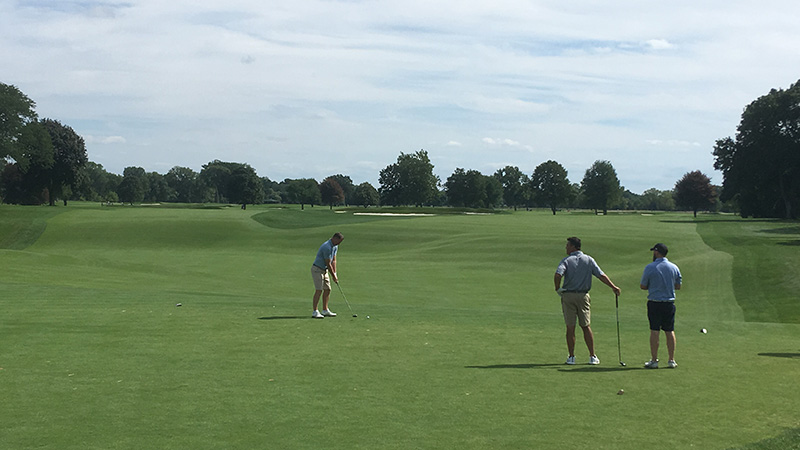
Barely six months ago, just about everyone in the golf business was collectively crowing about picking up record numbers of golfers and rounds played during the pandemic.
Today, both are predictably down, but there still is room for optimism, said an industry analyst.
Throughout the pandemic, the game picked up about 2 million new golfers and 25 million more rounds played.
Rounds played this year are down by about 5 percent, for reasons you might not think, and, according to early research, about 75 percent of the golfers who came to golf during Covid, have left the game as quickly as they arrived.
"What we've seen in studies we've done is that the majority of the Covid surge was due to existing golfers playing more, not new golfers," said Jim Koppenhaver of Pellucid Corp.
"We picked up 2 million new golfers during Covid, and 25 percent of them stayed. That's the bad news. The good news is existing golfers play more and are less likely to flake than those who have not yet honed their skills."
According to Golf Datatech's rounds played reports, participation is down by 5 percent compared to 2021. However, golf playable hours, a function of golf-friendly hours throughout the day, are down by 8 percent, Koppenhaver said, meaning golf is outperforming the decline in players and weather.
That is encouraging, said Koppenhaver, considering not only the weather and decline in number of players, but also economic challenges such as record inflation and fuel prices.
"Most of the golfing population is not as affected by a weak economy as Joe Lunchbucket," he said.
But is the industry recession proof? Koppenhaver says no.
He recalls industry leaders who years ago touted the "build a course a day" philosophy, saying golf was always the last industry to enter a recession and the first one out.
"Is golf recession proof? I think we've proven that to be categorically false," he said. "I would say it is recession resistant."
Koppenhaver says it did not have to be this way at all - losing 75 percent of the players picked up during the pandemic. With better customer service, more emphasis on point of sale and collecting contact information in the golf shop
"Some said it was inevitable that we would give back what we gained. I disagree with that," he said. "We attracted new golfers and we did a crappy job communicating with them and convincing them to come back.
"We didn't up our customer relations and management skills. We didn't change the way we talked to them. What we did was what we always do - greet them, show them a good time and just hope they come back."
With just a little effort, things could be different. Much different. In fact, many daily fee operations might be missing out altogether.
Pellucid's data indicates that greens fees have lagged inflation significantly since the pandemic.
Does that mean every golf course should automatically increase fees across the board by 10 percent? Probably not, Koppenhaver wrote in his latest newsletter. But the numbers suggest that an increase is warranted, even for those operations who live in fear of losing players over a fee hike.
"The best-case scenario, with a little effort maybe we lose only 50 percent of the newcomers, but we still let six figures slip through our fingers," Koppenhaver said.
"The golf industry is like anything else - we gravitate to what we are familiar with. It is time to
Take some of this revenue and put it into customer relationship management. But as an industry did we do that? No. We bought new cart fleets, and we put it into the golf course. We have to have a balanced attack. We should have split 50 cents of every dollar into renovations and 50 cents to building customer relationships.
"But we're not comfortable with that. We put money into stuff we know how to do. And when we keep doing that, we keep getting the same results."

